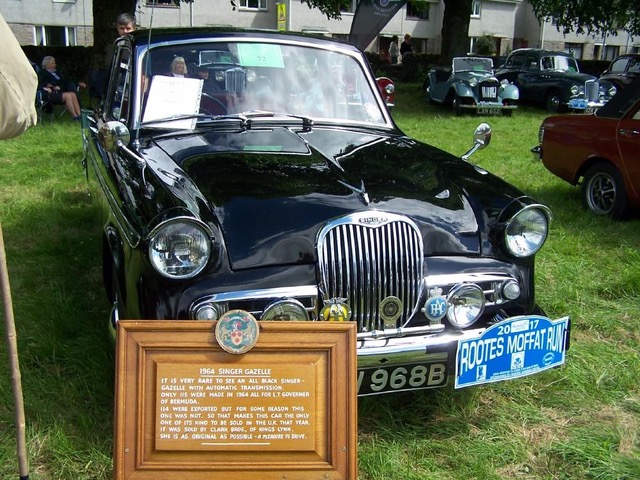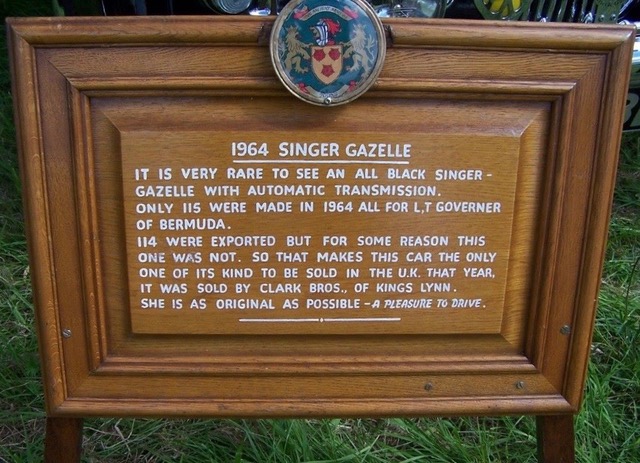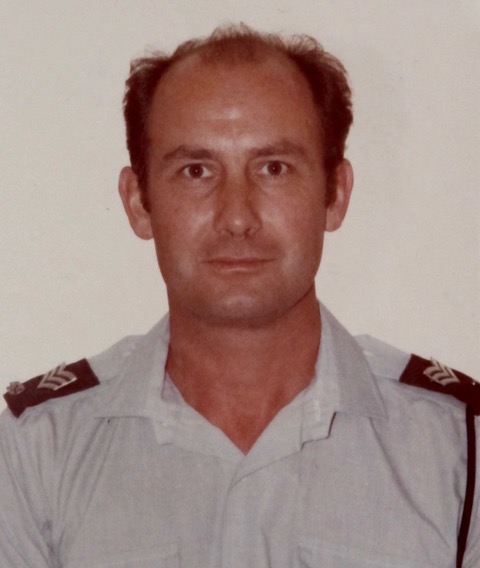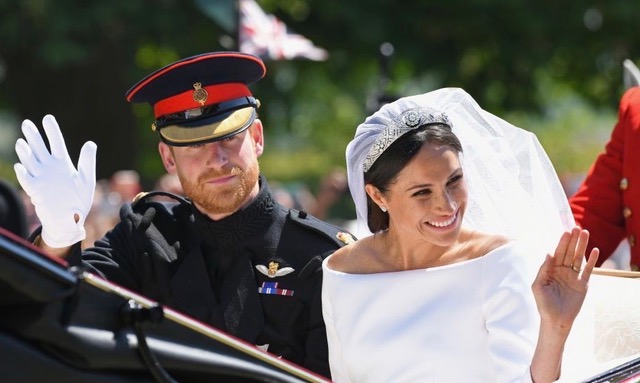Drug Ship Under Searchlights on High Seas
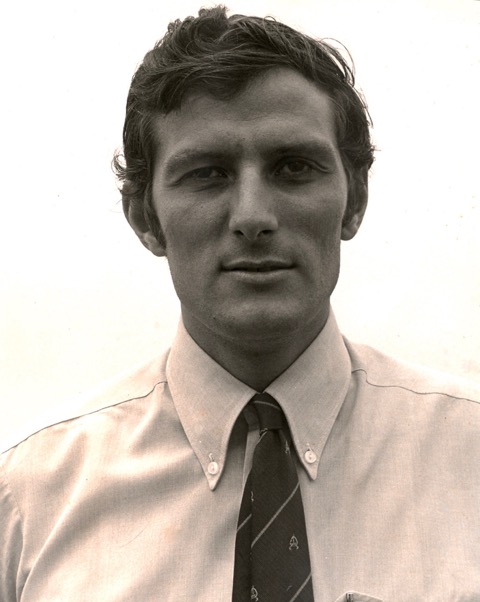
During my years as Head of the Bermuda Police Drug Squad there were numerous opportunities to assist foreign enforcement efforts to combat drug interdiction on the high seas – whether Bermuda bound or elsewhere. These were the days before the Bermuda Harbour Radio, at Fort St. George changed its name and became the Bermuda Maritime Operations Center using enhanced computerized radar surveillance and GPS technology. Sea going vessels were prominent in the late 1970’s engaging in the narcotics trafficking trade and liaison and assistance initiatives were increasingly employed in an attempt to disrupt the nefarious activities of these smugglers. One such example occurred in March of 1979 when intelligence information received alerted the Bermuda Police to the close proximity of a suspected drug ship then approaching our waters.
The Royal Gazette adequately reported the facts, in part, beginning on Wednesday, 21 March, 1979:
“After tracking the ship for several days, two U.S. Coast Guard cutters detained and searched a Panamanian registered freighter offshore on Tuesday on suspicion of carrying a cargo of drugs.
The two cutters – the Chilula from North Carolina and the Tamaroa from New York – followed the Dania to Bermuda from the East Coast, waiting for permission from the Panamanian Government to board the 72 meter vessel.
“The Dania put into Bermuda amid suspicions that she was carrying hashish from Morocco to the United States. The ship had been shadowed by a U.S. Coast Guard cutter for eleven days.
Sometimes it was not just shadowed. Search lights after dark were preventing the crew disposing of contraband overboard. A March 17 entry in the Dania’s log read:
‘Coast Guard searchlight on us from sunset to sunrise’
“About dawn, the freighter, flanked by the cutters, came within 10 miles of Cooper’s Island. Just before noon permission was received and a party of Coast Guard officials went aboard.
“According to Commander J.C. Carpenter of the Chilula, nothing was found – no drugs, no cargo.
“We did not find any contraband,” he said, “and have released the Dania to continue her voyage.”
“The ship was travelling in ballast, without any cargo. It professed to be coming from Morocco and going to Halifax.”
“Through undisclosed sources, Coast Guard suspicion of the freighter was aroused several days ago as it was lying off Norfolk, Virginia. The cutters began following the Dania, which diverted to Bermuda, until permission was received by officials in Panama to detain and board the ship.
Commander Carpenter was unable to explain why the Dania, en route from Morocco to Halifax, was first off Virginia but then diverted to Bermuda.
“These are questions we can’t answer,” he said.
“A Bermuda Police boat was dispatched and stayed off the scene for several hours. But no Bermuda officials boarded the Dania. Police Commissioner L.M. Clark said the Dania was outside [both] Bermuda waters and authority. The name of the owners of the Dania was unavailable.
“The vessel was carrying a crew of 21 – all men of mixed nationalities from Indonesia, Singapore and Pakistan. Their captain, whose name was unavailable, was said to be Indonesian. A local shipping official said the 1,793-gross-ton ship used to be called Christos K and switched names after ownership apparently changed.
“The Coast Guard released the Dania late in the evening and it made its way into Bermuda the next morning. Using pumps to drain tanks and a police dog to sniff behind walls and covers, Bermudian and American authorities again searched for suspected hashish aboard the Panamanian registered freighter which had tied up in St. George’s.
“By 6.30 p.m. the authorities were still on the ship, on the deck and in the holds, looking for drugs believed to have been bound for the United States. Nothing had been found but the search was continuing.
“Everyone is pretty well convinced there was something there to begin with,” said J.C. Carpenter, captain of the Chilula.
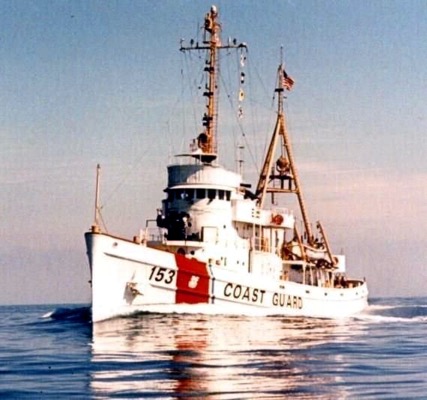
IMPORTANTLY, a police drug squad forensic initiative quietly yielded evidence of the presence of a quantity of newly laid cannabis residue taken in scrapings from around the inside top of the Dania’s funnel. This find, shared with the Coast Guard, ultimately led to the conclusion that the Dania had burned its cargo during the 11 days it was being shadowed at sea by the U.S. Coast Guard.
The Coast Guard had begun tracking the freighter on March 9 and had been maintaining surveillance by radar, by sight and by searchlight, as part of an intensive U.S. investigation into a drug smuggling operation. U.S. federal authorities including the Drug Enforcement Administration and the Coast Guard believe the Dania was connected with a hashish operation.
“On March 9,” said Commander Carpenter, “the Chilula went to a position 65 miles off Norfolk, Virginia in anticipation the Dania, ‘or a vessel matching its description’ would arrive and rendezvous with a contact ship from shore to transfer drugs. That same night, the Dania showed up, right on schedule and right on the position,” he said.
But the alleged contact boat never arrived.
“The Dania stayed at the position for 24 hours. All the while Commander Carpenter said, the Chilula was laying-off, out of sight over the horizon, maintaining covert surveillance.
The Dania turned southeast. The Chilula, tracking it by radar, covertly shadowed the freighter for 100 miles. Then, the Dania turned around and wound up again at the position off Norfolk. Still no boat rendezvous. The Dania then turned east, toward Bermuda.
“Last Saturday, the Chilula finally came within sight and contacted the Dania. The cutter informed the freighter’s captain that the Coast Guard would board the ship “to check the manifests" as soon as permission was received from officials in Panama, the country of registry.
Until permission was received, the cutter gave the Dania an option: anchor now or continue on its voyage. The Dania opted for the latter, bound, it said, for fuel and provisions in Bermuda.
The Chilula and cutter Tamaroa then followed less than a mile behind the Dania, maintaining intensive surveillance even at night, aided by searchlights focused on the 1,793-gross-ton ship.
“On Monday, permission was received, and on Tuesday, 10 miles off Cooper’s Island, Bermuda, Coast Guard officials from the Chilula and the Tamaroa boarded the vessel. Nothing was found and the Dania was released Tuesday evening.
The 72-metre vessel tied up at Penno’s Wharf and local officials began a more intensive search.
Last night, Commander Carpenter said, “They were doing everything to determine it was on board, or is not on board.”
“The Dania, whose last known port of call was Cueta, the Spanish port in northern Morocco, on February 11, is said to be bound for Halifax. The freighter arrived off Norfolk on March 8, waiting 65 miles off shore – outside U.S. territorial waters. Then it moved south-east 120 miles, only to turn back off Norfolk.
Then the freighter, running very short of fuel, food and water, after more than a month at sea, turned to Bermuda.
“Why not to Norfolk, it was closer?” the Commander asked. "What happened to Halifax?”
“The Dania, he said, never complained about the searchlights trained on the vessel. Furthermore, the captain and crew never asked the Coast Guard, once the Dania was boarded, what they were searching for. Jurisdiction now, he said, was with Bermuda authorities. The Coast Guard was assisting only at their request.
“Just after noon, plain-clothed Bermuda Police officers and Customs officials and a Government marine surveyor boarded the vessel and began to search. They were joined by the Coast Guard, the Fire Brigade with pumps and hoses, and the Police dog. They searched from the cargo holds to the water tanks.
“They’re pumping the tanks to make sure they are just tanks” Commander Carpenter said.
The Dania has 21crew, all men from Indonesia, Pakistan and Singapore. Local authorities declined to comment on the search.
At noon, yesterday, Police Commissioner L.M. Clark said, “We have no more real interest in her now. She has been searched and found clean. That’s fair enough.”
A new development then followed which prevented authorities releasing the Dania, even though three days of searches failed to turn up any drugs. The Dania, according to Police, had no money and was unable to pay municipal wharfage fees nor could it buy food, water or fuel.
Since tying up alongside Penno’s Wharf on Wednesday, the ship has been trying without success to contact its owner Mr. Abdul Sadam Abdul Karim.
According to Lloyd’s Registry of Ships, the freighter has had three different owners and three name changes in the last year. In 1978 the vessel was called Christos K and owned by a Greek firm and registered under the Greek flag. Later last year, the vessel’s ownership changed again and with it the name, to the Hatim. Since then Mr. Karim has bought the ship and renamed it Dania.
The 1,793-gross-ton vessel, described by Lloyd’s as a “passenger/general cargo” ship was built in 1957 in Goole [Yorkshire, England] and originally named, as it was again later, the Christos K. It was first sold in 1973 and renamed the Darwin.
Authorities were not worried the Dania would try to leave without paying wharfage and pilot fees.
“There is nowhere for them to go,” said Mr. Martin Hutley, Director of Marine and Ports.
“With very little fuel there is not much chance of it getting away.”
Commander J.C. Carpenter said the Dania was very short of food, water and fuel. Documents on board show its last port of call was Cueta, the Spanish port on the northern tip of Morocco, on February 11.
The 21 people on board, all Oriental, will be confined to the ship and the Dania will stay in St. George’s until fees can be paid and provisions purchased. Authorities here, Mr. Hutley said, might ultimately have to contact officials in Panama, the country of registry, to take responsibility.
“Maybe we should put the ship alongside the Moruka” he quipped, referring to another beleaguered ship still here after more than a year.
A letter dated 10th April 1979 conveyed the following message:
From: Consulate General of The United States of America
To: His Excellency The Honorable Sir Peter Ramsbottom, G.C.M.G., G.C.V.O.
Governor of Bermuda, Government House, Bermuda
Your Excellency
I have been asked to deliver to you the following message from the Commandant, U.S. Coast Guard:
“The United States Coast Guard wishes to extend its great appreciation for the part played by the Bermuda Police in the recent law enforcement action involving the Panamanian motor vessel “Dania”. Although no contraband was found on the vessel, it is this evidence of cooperation which puts contraband carrying vessels on notice that the effort to eradicate their business is truly international in scope.
“Particular commendation should go to Inspector Rose of the Bermuda Police. I am sure he would consider his performance as being all in a day’s work, but without his diligence and professionalism, the nature of the cargo on the “Dania” might never have been determined. I also thank you for the courtesies extended to the officers and crew of USCGC “Tamaroa” and USCGC “Chilula”.
“We look forward to continued cooperation with both Inspector Rose and the Bermuda Police.
Best regards,
J.R. Haynes
Commandant
U.S. Coast Guard
I would like to add my own personal thanks for the always good cooperation extended by the Bermuda Police.
Sincerely,
S. Richard Rand
American Consul General
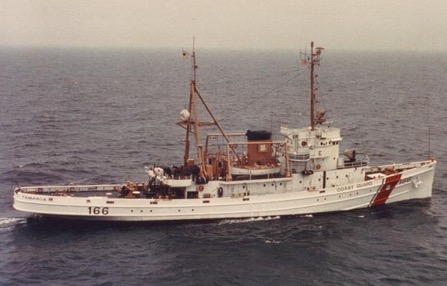
(She became an artificial reef in May 2017 - see more below)
On 6 June 1979 it was reported that the crew of the Dania had gone on public aid and had abandoned the ship to rats. The Department of Social Services had arranged to provide welfare assistance to the destitute Indian and Pakistani crew of the Dania.
Meanwhile, the Department of Health expressed concern over the persisting problem of rats infesting the ship tied up at Hunter’s Wharf.
Mr. Martin Law, health officer said, “The rats are a potential health hazard, and the ship should stand off away from the docks so the rats can’t get on shore.”
Because of the rats and the general unsanitary conditions on the freighter the Department of Health declared the ship “unfit” and ordered the six remaining crew members off. The toilets cannot be flushed and are clogged; the crew ran out of fresh water on Sunday; and a pungent smell of perspiration pervades the vessel, peppered, Mr. Law said, by the odor of curry powder.
“The conditions at present make it unfit for men to live on board.”
The six crew members – five from India, one from Pakistan, ranging in age from 19 to 34 – spent their last noon on the ship together yesterday sipping tea and listening to Arabic chants played over a portable recorder. They then were to leave to spend the night at the Bermuda Home for Sailors in Hamilton. Until other arrangements are made they will eat their three meals and have their sleep there for $10 a day each according to a supervisor, Social Services will pay the bill.
In another development, a loran – an electronic navigational device valued in excess of $1,000 – was discovered missing from the bridge of the ship. The development raised suspicion the loran might have been sold or removed in violation of Government orders to keep the ship and equipment on board intact. Otherwise anything removed is subject to customs duty. In addition, such losses would diminish the value of the vessel should government have to auction the ship to reclaim debts. Such an eventuality appeared unlikely, according to Mr. Martin Hutley, director of the Department of Marine and Ports.
The red, blue, and white Panamanian flag yesterday was flying from the stern of the Dania but authorities in Panama have renounced all responsibility for the 1,793-gross-ton ship.
Because Captain William Abineno and 18 crew members had abandoned the ship, leaving six crew on board without money and provisions the Department of Marine and Ports sought assistance from the government of Panama, the country of registry.
“We sent a telex to Panamanian authorities,” said Mr. Martin Hutley, director of Marine and Ports. “And they replied she was under a provisional registration which [had] expired April 16.”
Lloyd’s Register of Ships showed the Dania was purchased earlier this year by Abdul Salam Abdul Karim, believed to be of Pakistan. Attempts to contact him have been to no avail. One local official said the ship, built in England in 1957, appeared to be uneconomical for commerce and best suited for scrap.
Unless representatives of the Dania in Pakistan reply to inquiries from the Department of Marine and Ports within a week, the Bermuda government will pay to have six destitute crew members flown back to their homes in Pakistan and India, officials said
yesterday.
“They will be repatriated if no contact is made,” said Mr. Rubin Elias, chief immigration officer. The expense, he said, would then be assessed against the ship.
For several weeks, Marine and Ports tried unsuccessfully to contact the owner, Abdul Salam Abdul Karim, in Pakistan.
“We sent a long telex explaining the situation” last week to the agent, Ahmed Bin ally al-Shamshi in Dubai. “But haven’t received a reply,” said Mr. Martin Hutley, director.
If nothing is heard from the owner, Mr. Hutley and Mr. Elias said Government would seek a court order to seize the ship to pay local debts.
The Dania’s engine problems were so severe that the ship never put to sea again. As it built up more debts sitting in Bermuda, it became clear that only efforts by the Government would take the ship away.
By the end of June 1979 Social Services had paid $1,380 to the crew and were still counting….
Almost two years later, in mid-March 1981, the arrested and abandoned freighter Dania, once thought to have been a drug ship, may have to be towed out to sea and sunk, taking with it Government’s chances of recovering $30,000 in out of pocket expenses. Such was the word from Mr. Martin Hutley, Director of Marine and Ports, agent for the local Admiralty Court, which seized the 219-foot ship last year. But Mr. Hutley was still hopeful that someone will come forward to pay Government’s bills and take the ship away – perhaps as a personal cruise ship for the Mediterranean.
More likely, however, as scrap to make a million razor blades.
“We’ll consider anything provided the ship is taken away,” said Mr. Hutley yesterday.
But he conceded that there had been little interest since the ship was advertised on both sides of the Atlantic last year.
“No serious offers whatsoever,” said Mr. Hutley. Not a nibble.
And he added that if no offers are forthcoming, Government might have to take the ship out to sea and scuttle it. The Dania has been sitting out at Dockyard for almost two years.
After having been boarded back in March 1979 some 10 miles off the Island by the United States Coast Guard a search had revealed nothing. No drugs. No cargo. Not even much fresh water. And therein lay the Dania’s troubles. Because there was little fresh water, the crew mixed in some salt water in her engine to keep steam up. The inevitable happened: her turbines seized. They have not turned over since, and neither has the ship moved much.
Government’s bills were incurred when it had to repatriate the 21-man crew to Singapore, Pakistan and Indonesia. It also had foot towing, docking, and other charges when the ship was moved from St. George’s to Dockyard. Her only use over the past two years was as a prop in the feature film Ivory Ape. That brought Government $10,000 but little else, and for most of her time here, the Dania has just rusted.
For interested parties, the Dania measures 219 feet at 1,793-gross-tonnes. She was built in 1957 as a passenger freighter with 20 passenger cabins, two lounges, and plenty of head room and deck space. However, she needs new engines.
“We feel we can put it away fairly cheaply,” said Mr. Hutley, but for the moment no action is being contemplated until at least after the summer months.
The Dania’s final mention was in September 1981 in an article concerning the saga of another drug ship, the Sea Rose, then in local waters. It was reported by the Royal Gazette that the Dania, after being arrested by an Admiral’s Court and with Government subsequently unable to find a buyer for the vessel, a local businessman Mr. Michael Marshall had offered to buy the ship for $5,000. The court jumped at the opportunity, and the ship is to be towed to Canada where it is expected to be broken up. Owners of the Dania, in India, were never determined.
The USCGC Tamaroa which played a determined role in the seizure of the Dania is featured in the article below dated May 12, 2017.
Starring role: The decommissioned US Coast Guard Cutter Tamaroa, was sank 33 nautical miles off the coast of Cape May. The 74-year-old vessel was featured in the book The Perfect Storm after being involved in saving seven people in the 1991 nor’easter. The ship will become part of the Del-Jersey-Land Inshore Artificial Reef System.
NEW YORK DAILY NEWS
Wednesday May 10, 2017
Cape May, New Jersey (AP)
Ship in ‘Perfect Storm’ movie starring George Clooney sunk off N.J. coast, becomes artificial reef
http://www.nydailynews.com/newswires/entertainment/perfect-storm-ship-sunk-part-artificial-reef-article-1.3151754
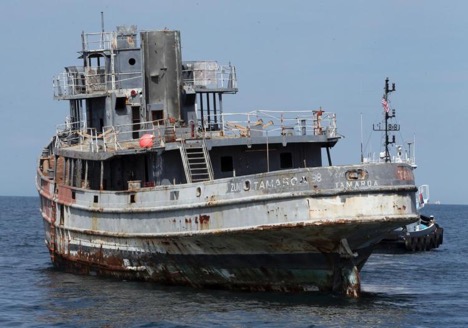
Photograph by Dale Gerhard/The Press of Atlantic City via AP
Sources:
First-hand knowledge and Press reports of the day:
US COAST GUARD STOP SHIP FOR DRUGS SEARCH
The Royal Gazette Wednesday 21 March 1979
FREIGHTER STRIPPED IN SEARCH FOR DRUGS
The Royal Gazette Thursday 22 March 1979
DRUG SEARCH SHIP IS DETAINED
The Royal Gazette Friday 23 March 1979
CREW GOES ON PUBLIC AID, ABANDON DANIA TO RATS
The Royal Gazette Wednesday 6 June 1979
PANAMA CLOSES DANIA REGISTRY
The Royal Gazette Wednesday 6 June 1979
BERMUDA READY TO PAY FOR DANIA CREW
The Royal Gazette Wednesday 13 June 1979
DANIA: GOING NOWHERE, GOING ON THREE MONTHS
Social Services pay $1,380 to crew and counting
The Royal Gazette Wednesday 27 June 1979
ARRESTED DANIA MAY GO TO THE BOTTOM
The Royal Gazette Thursday 19 March 1981
See more Bermuda investigations concerning the following drug ships –
Matesane & Panulirus: December 1977
Nestor: 11 April 1979
Sea Rose 1: September 1981
Sea Patsy a.k.a Patsea: Sept / October 1981
Lady Nicole: November 1981
Karob: 7 December 1981
